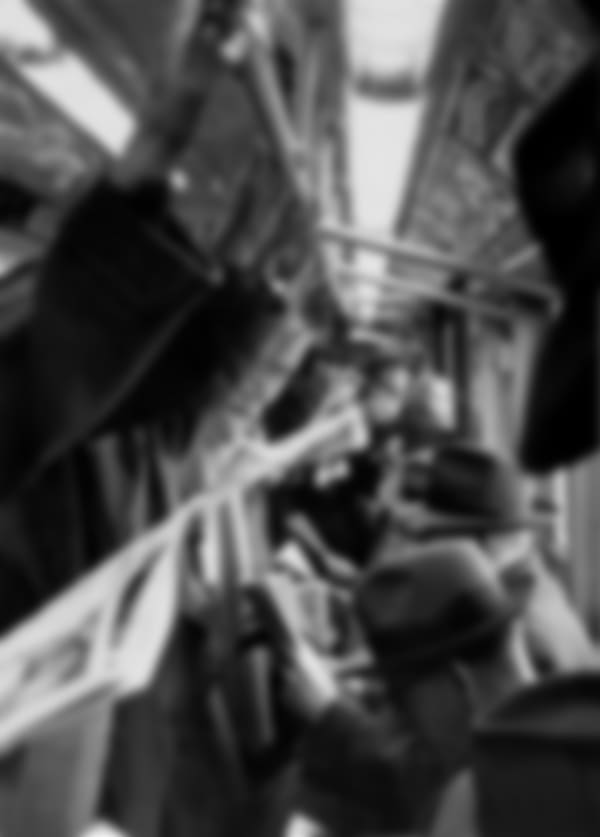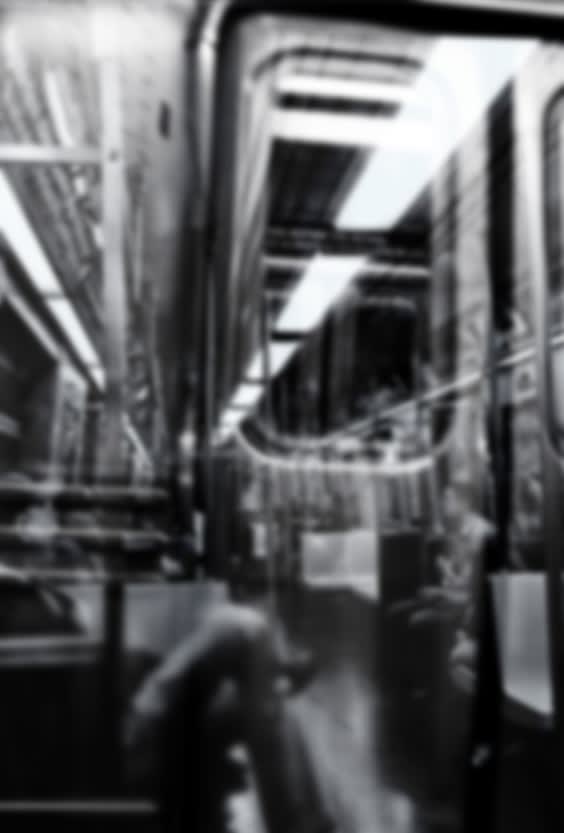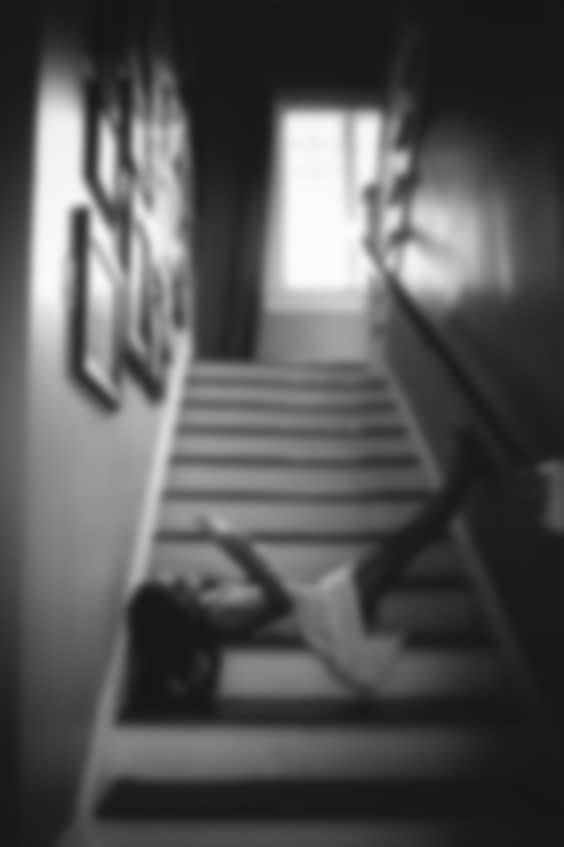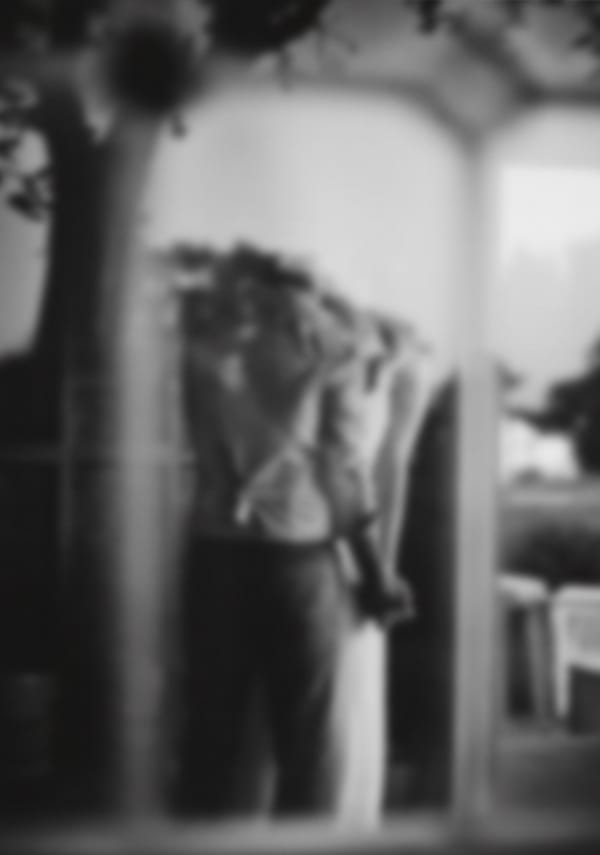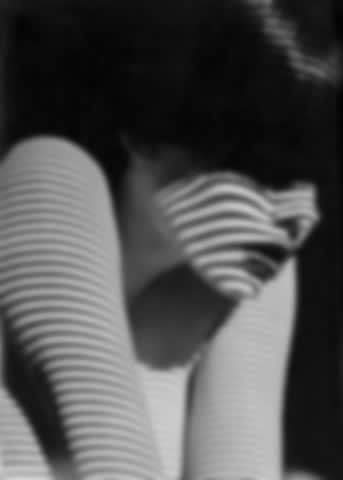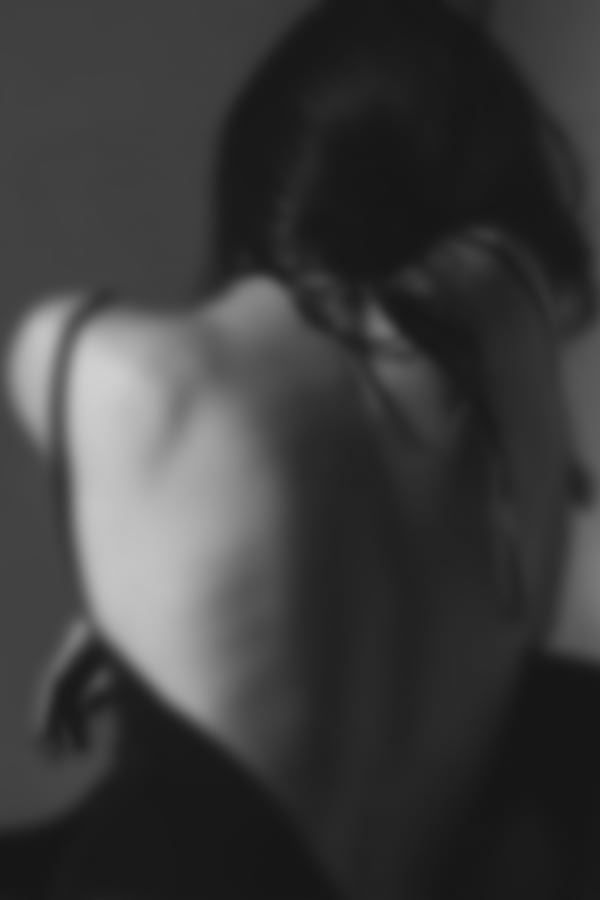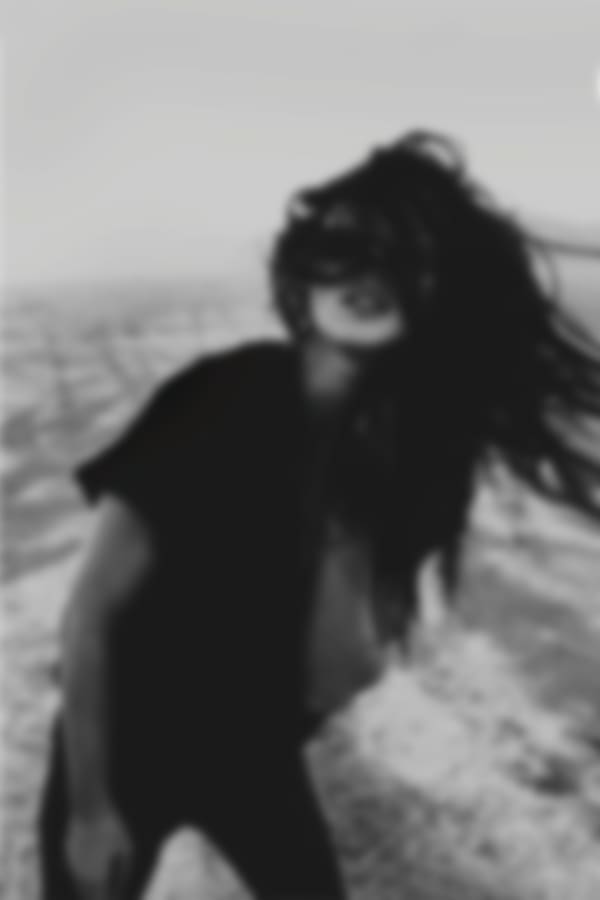WE DO NOT REMEMBER DAYS, WE REMEMBER MOMENTS
Cesare Pavese
What remains of the time we’ve lived? In The Fog Of Time, Chiara Del Vecchio seeks to answer this question through the silent power of painting. In black and white, like a dream fading upon waking, her works inhabit the fragile space between memory and vision, between what once was and what still lives within us.
There is no explicit narrative, but rather an emotional geography made of waiting, forgotten gestures, and full silences. The images emerge like memories—blurred, uncertain, yet powerful. Each canvas is a sensitive threshold, an invitation to slow down, to feel more than to see. In a world ruled by speed and forgetfulness, Del Vecchio’s art becomes a poetic act of resistance.
Time is not represented—it is crossed. Painting becomes a place of inner resonance, where black and white is not merely an aesthetic choice, but the deep language of memory. The Fog Of Time reminds us that what memory loves— as Yourcenar wrote—remains eternal. Even if only for a suspended moment.
-
 FOGTIM01, 2020
FOGTIM01, 2020 -
 FOGTIM02, 2020
FOGTIM02, 2020 -
 FOGTIM03, 2020
FOGTIM03, 2020 -
 FOGTIM04, 2020
FOGTIM04, 2020 -
 FOGTIM05, 2020
FOGTIM05, 2020 -
 FOGTIM06, 2020
FOGTIM06, 2020 -
 FOGTIM07, 2020
FOGTIM07, 2020 -
 FOGTIM08, 2020
FOGTIM08, 2020 -
 FOGTIM09, 2020
FOGTIM09, 2020 -
 FOGTIM10 - Via Nostalgia, 2020
FOGTIM10 - Via Nostalgia, 2020 -
 FOGTIM11, 2020
FOGTIM11, 2020 -
 FOGTIM12, 2020
FOGTIM12, 2020 -
 FOGTIM13 - Where We Meet, 2020
FOGTIM13 - Where We Meet, 2020 -
 FOGTIM14, 2020
FOGTIM14, 2020 -
 FOGTIM15, 2020
FOGTIM15, 2020 -
 FOGTIM16, 2020
FOGTIM16, 2020 -
 FOGTIM17, 2020
FOGTIM17, 2020 -
 FOGTIM18, 2020
FOGTIM18, 2020 -
 FOGTIM19, 2020
FOGTIM19, 2020 -
 FOGTIM20, 2020
FOGTIM20, 2020 -
 FOGTIM21, 2020
FOGTIM21, 2020 -
 FOGTIM22, 2020
FOGTIM22, 2020 -
 FOGTIM23, 2020
FOGTIM23, 2020 -
 FOGTIM24, 2020
FOGTIM24, 2020 -
 FOGTIM25, 2020
FOGTIM25, 2020 -
 FOGTIM26, 2020
FOGTIM26, 2020 -
 FOGTIM27, 2020
FOGTIM27, 2020 -
 FOGTIM28, 2020
FOGTIM28, 2020 -
 FOGTIM29, 2020
FOGTIM29, 2020 -
 FOGTIM30, 2020
FOGTIM30, 2020 -
 FOGTIM31, 2020
FOGTIM31, 2020 -
 FOGTIM32, 2020
FOGTIM32, 2020 -
 FOGTIM33, 2020
FOGTIM33, 2020 -
 FOGTIM34, 2020
FOGTIM34, 2020 -
 FOGTIM35, 2020
FOGTIM35, 2020 -
 FOGTIM36, 2020
FOGTIM36, 2020 -
 FOGTIM37, 2020
FOGTIM37, 2020 -
 FOGTIM38, 2020
FOGTIM38, 2020 -
 FOGTIM39, 2020
FOGTIM39, 2020 -
 FOGTIM40, 2020
FOGTIM40, 2020 -
 FOGTIM41, 2020
FOGTIM41, 2020 -
 FOGTIM42, 2020
FOGTIM42, 2020 -
 FOGTIM43, 2020
FOGTIM43, 2020 -
 FOGTIM44, 2020
FOGTIM44, 2020 -
 FOGTIM45, 2020
FOGTIM45, 2020 -
 FOGTIM46, 2020
FOGTIM46, 2020 -
 FOGTIM47, 2020
FOGTIM47, 2020 -
 FOGTIM48, 2020
FOGTIM48, 2020 -
 FOGTIM49, 2020
FOGTIM49, 2020 -
 FOGTIM50, 2020
FOGTIM50, 2020 -
 FOGTIM51, 2020
FOGTIM51, 2020 -
 FOGTIM52, 2020
FOGTIM52, 2020 -
 FOGTIM53, 2020
FOGTIM53, 2020
“We are such stuff as dreams are made on, and our little life is rounded with a sleep,” writes Shakespeare in The Tempest. It is from this evanescent material—suspended between the visible and the invisible—that Chiara Del Vecchio seems to draw in giving life to The Fog Of Time: a collection of black-and-white works that move along the subtle boundary between dream and memory, between what once was and what resurfaces, between lived and imagined realities.
In these blurred canvases, the image appears like a distant echo, the indistinct reflection of a thought that returns to the mind with the sweetness of vertigo. Details slip away, dissolve—just as they do in our deepest memories: never sharp, never complete, yet always alive. Del Vecchio explores time not as a straight line, but as a spiral, where every curve leads back to an emotion, a face, a forgotten sound.
Proust, in In Search of Lost Time, teaches us that memory cannot be summoned—it arrives unexpectedly. A light, a scent, a sound—and the doors of the past swing open. In this way, Del Vecchio’s works become visual madeleines: temporal thresholds to be crossed with the skin rather than the eyes. They do not seek to be understood, but to be felt. Each canvas is a pocket of time, a quiet invitation to contemplation.
The absence of color amplifies the evocative power. Black and white—like the film of old photographs or the worn graphite of intimate sketchbooks—restores to the image its primal, emotional force. It is the grammar of reminiscence, the language of intimacy. Here, objectivity gives way to impression, and the visible becomes a thin veil that both conceals and reveals.
With a gentle hand and a deep gaze, Chiara Del Vecchio does not simply paint—she caresses, suspends, suggests. Her gestures are those of a silent storyteller, entrusting the air between shades with the task of saying what words cannot. Painting becomes the breath of time, a sensitive flow between present and past.
The figures that emerge from her work never enter the scene forcefully. They are impressions that elude the grasp of consciousness—dreams that fade upon waking, gestures that ask to be remembered more than observed. In this constant play between absence and presence, what is missing becomes the true substance of the work. And it is there that emotional tension concentrates: in what is not seen, but sensed.
There is no explicit narrative in her paintings. Rather, there is an invisible map of shared experiences: the tenderness of a caress, the anticipation of a glance, the sweet solitude of an afternoon. The entire cycle breathes with an inner, slowed-down time—like that of our most enduring memories or recurring dreams.
Each painting is an open page of a story that is both deeply personal and universally felt. Woven through are everyday epics: mothers comforting, children discovering the world, fleeting loves, lingering wounds, sudden joys. Like in Chekhov’s stories or Rilke’s verses, the event itself is just a threshold—what matters is the feeling that pulses beneath it.
Images, like the truest emotions, do not ask to be explained—they knock gently, slip inside, and settle in the body with the grace of an intuition. Chiara Del Vecchio seems to tell us that the visible is only a threshold: the true language of the soul manifests in the indistinct, in what vibrates beneath the surface. Each canvas becomes a small rite of passage, an invitation to inner resonance, where the gaze becomes listening and art becomes a sensorial, almost meditative experience.
In this sense, The Fog Of Time does not simply represent—it accompanies. It is a body of work that guides the viewer back into the time of their own existence, through a direct, unfiltered emotional encounter. Walter Benjamin described memory as a montage composed in retrospect. Here, painting itself becomes montage: layers, veils, dissolves that return to the image the fragility and power of true memory.
Black and white is not merely an aesthetic choice—it is a language. The language of memory and interiority. Every shade of gray becomes an emotion, a pause, a breath. In this chromatic suspension, past and present merge, creating an alternate time: closer to being than to appearing, more rooted in feeling than in defining.
In a world that rushes and consumes images at the speed of a glance, Chiara Del Vecchio invites us to slow down, to inhabit silence, to contemplate. Her works do not impose themselves—they offer themselves. And in that offering, they remind us of who we were, who we are, and who we might still become.
The Fog Of Time is, ultimately, an act of poetic resistance. A way to return to time its deepest meaning: that of being a living, generative, transformative material. Because, as Marguerite Yourcenar writes, “what memory loves remains eternal.” And in these works, eternity is a suspended moment—between a vanishing image and a returning sensation.
It is not time that passes—we are the ones who must learn to move through it. And in the art of Chiara Del Vecchio, that passage becomes possible. Intimate, essential, profound. Like a step into silence. Like a whisper becoming voice once more.
But there is something even subtler, almost mystical, in these images: the feeling that memory is not only a return, but a place—a place to inhabit slowly. Walter Benjamin defined memory as a construction in retrospect, a kind of montage. Here, the montage takes place through the painting itself, which layers veils, dissolves, distances—until the image becomes fragile and uncertain, just like authentic memory.
There is no explicit narrative in her paintings. Instead, an invisible map of shared experiences: the tenderness of a caress, the anticipation of a glance, the soft solitude of an afternoon. The entire cycle lives in an inner, slowed-down time—like that of the most enduring memories or dreams that keep returning.
The Fog Of Time invites us to slow down, to contemplate, to close our eyes and let what we have forgotten emerge. It leads us into a different time, beyond the noise of the present—into that liminal space where identity is shaped and reshaped. Each painting becomes an opaque mirror, where we do not see our face, but something far deeper: our shadows, our affections, our longings.
In an era dominated by fleeting images and instant oblivion, Chiara Del Vecchio’s work is a poetic act of resistance. A gentle invitation to reconnect with what has been, in order to better understand who we are. Because, as Marguerite Yourcenar writes, “what memory loves remains eternal.”







